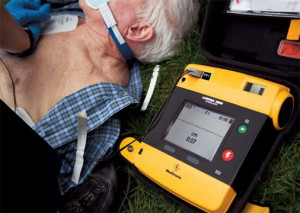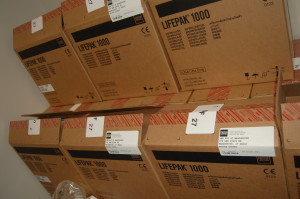 MANCHESTER and HARTFORD — Aetna Ambulance and the Ambulance Service of Manchester have purchased new LifePak 1000 Automated External Defibrillators (AEDs) for use on every Basic Life Support unit in both fleets. As one of (reportedly the first) commercial ambulance service in Connecticut to equip every BLS unit with this life saving piece of equipment, it was critical to continue the capability with new technology.
MANCHESTER and HARTFORD — Aetna Ambulance and the Ambulance Service of Manchester have purchased new LifePak 1000 Automated External Defibrillators (AEDs) for use on every Basic Life Support unit in both fleets. As one of (reportedly the first) commercial ambulance service in Connecticut to equip every BLS unit with this life saving piece of equipment, it was critical to continue the capability with new technology.
Each Paramedic Unit at Aetna and ASM use LifePak 15s capable of wireless transmission of 12-lead EKGs, external pacemaking, cardioversion, CO detection, non-invasive blood pressures and end tidal CO2 monitoring (specification arrangement also known as fully configured).  LifePak 15s are used on a daily basis whereas AEDs see use on a rare occasion but have a significant impact for those patients. Typically the CPR and defribillation performed when these AEDs are used is the first skilled services provided to a patient in a life threatening situation.
LifePak 15s are used on a daily basis whereas AEDs see use on a rare occasion but have a significant impact for those patients. Typically the CPR and defribillation performed when these AEDs are used is the first skilled services provided to a patient in a life threatening situation.

 Why did the EMTs (ambulance) and Paramedics arrive separately?
Why did the EMTs (ambulance) and Paramedics arrive separately?